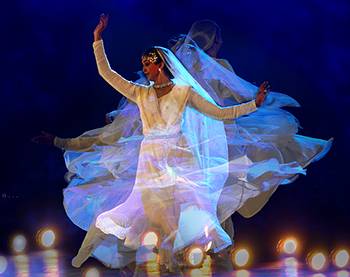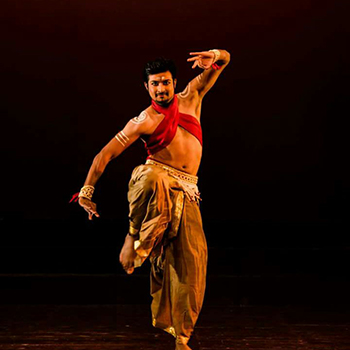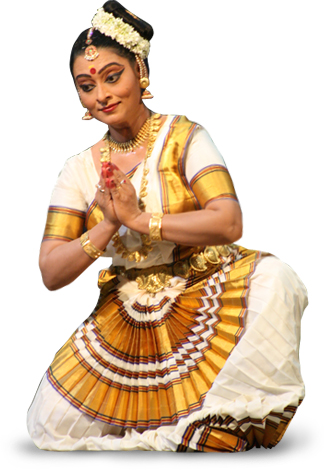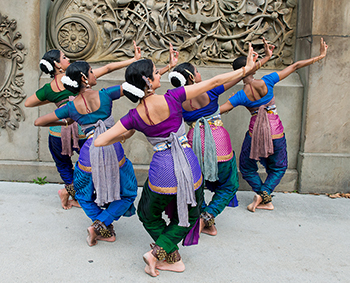
|
IAAC ERASING BORDERS FESTIVAL OF INDIAN DANCE OUTDOORS WAGNER PARK, NYC AUGUST 15, 2015 6:30 - 8:30 pm. Click here for Map |
|
| SANJUKTA WAGH - Kathak | |
 Performer choreographer teacher and curator Sanjukta Wagh trained extensively in Kathak with Rajashree Shirke and in Hindustani music with Murli Manohar Shukla. Her engagement with theatre sojourn at London's Laban Centre love of literature and deep unease with staying within comfort zones have led to interdisciplinary works - both innovative and within Kathak tradition- which have won applause in India and abroad. Her dance-theatre work Rage and Beyond: Irawati's Gandhari won two 2015 Excellence in Theatre Awards. Performer choreographer teacher and curator Sanjukta Wagh trained extensively in Kathak with Rajashree Shirke and in Hindustani music with Murli Manohar Shukla. Her engagement with theatre sojourn at London's Laban Centre love of literature and deep unease with staying within comfort zones have led to interdisciplinary works - both innovative and within Kathak tradition- which have won applause in India and abroad. Her dance-theatre work Rage and Beyond: Irawati's Gandhari won two 2015 Excellence in Theatre Awards. |
|
| 1. Rajat Chandrama: Invocation to Shiva [6.15 mins] | |
| A Dhrupad composed by Baiju Bavra celebrates the lord of Dance: Shiva the ascetic with enormous dreadlocks his body strewn with ashes; Shiva the androgynous being united with his female half Shakti - the principle on with the universe runs; Shiva the all-encompassing the omnipresent who shines in the splendor of the magnificent crescent moon on this forehead. | |
| 2. Teentala: Kathak Nritta [7:00] | |
| Celebrating the pure or non-interpretative aspect of the Kathak form nritta the dancer brings you various compositions set to the time cycle of sixteen beats: Teentala. The dance displays a choreographic range from subtle wrist torso and eye movements of the slow thaath and graceful gait of the gatnikas to the display of rhythmic precision in various fast paced compositions like todas tukdas parans tihais and tatkar. | |
| 3. Thumri: Storytelling in Kathak [5:30] | |
| A Thumri (romantic-devotional song) by Pandit Bindadin Maharaj describes an episode in the lives of the eternal lovers Radha and Krishna. Radha looks for Krishna as she walks along the winding paths of Brij but also complains that he constantly embarrasses her by flirting with her in public. Fed up with his antics the women of Brij decide to teach him a lesson - to publicly humiliate Krishna by dressing him up as a woman. They drape him in a sari complete with nose ring and bindi. Krishna however transforms into the most beautiful female form they have ever beheld leaving them awestruck. | |
| B) RAKESH SAI BABU - Mayurbhanj Chhau | |
 Born into the royal family of Mayurbhanj (Orissa) renowned for its performance-cum-martial art, Rakesh belongs to the Gurukul Chhau Dance Sangam, a company of six dancers directed by his father and renowned for both traditional and innovative works. Versed in a range of dance forms, he has also choreographed musicals, stage shows and television specials. His primary mission, however is to promote Mayurbhanj Chhau through performances and workshops around India - and the world. Born into the royal family of Mayurbhanj (Orissa) renowned for its performance-cum-martial art, Rakesh belongs to the Gurukul Chhau Dance Sangam, a company of six dancers directed by his father and renowned for both traditional and innovative works. Versed in a range of dance forms, he has also choreographed musicals, stage shows and television specials. His primary mission, however is to promote Mayurbhanj Chhau through performances and workshops around India - and the world. |
|
| 1. Dandi [7:30] | |
| Dance of the wandering ascetic based on the traditional ritual carried out by upper caste boys to celebrate the development of a boy into manhood and the possibility of his becoming a Brahmacharin (a celibate). He renounces family and personal possessions as he goes in search of knowledge of the immortal self. | |
| 2. Yuddha (war) - [7:00] | |
| A dance originally performed in the royal courts of Mayurbhanj to encourage warriors to fight to their last breath. Later it was reproduced as entertainment during celebrations displaying the heroic array of attach and defence movements. | |
| C) PALLAVI KRISHNAN - Mohiniyattam | |
 A leading Mohiniyattam exponent, Pallavi is acclaimed for her versatility as performer, choreographer and teacher. Having trained in Mohiniyattam with Guru Kalamandalam Shankaranarayanan, she graduated in Dance (Kathakali) at Shantiniketan - the only Indian dancer who is an alumnus of both of these legendary arts academies. Equally proficient in adavu (technique) and abhinaya (facial expression), she performs and teaches all over the world, and has received several honors for her contributions to Mohiniyattam and its repertoire. A leading Mohiniyattam exponent, Pallavi is acclaimed for her versatility as performer, choreographer and teacher. Having trained in Mohiniyattam with Guru Kalamandalam Shankaranarayanan, she graduated in Dance (Kathakali) at Shantiniketan - the only Indian dancer who is an alumnus of both of these legendary arts academies. Equally proficient in adavu (technique) and abhinaya (facial expression), she performs and teaches all over the world, and has received several honors for her contributions to Mohiniyattam and its repertoire. |
|
| 1. Cholkettu [12:00] | |
| Traditionally Cholkettu is the very first item of Mohiniyattam. 'Chollu' means 'syllables' and 'kettu' means 'threading'; thus in this dance soft and graceful movements are aesthetically threaded with raga melody and tala rhythms into a garland. Cholkettu traditionally begins with a Sloka (Sanskrit verse) dedicated to a deity followed by choreography that highlights the abstract, non-dramatic, aspect of Mohiniyattam. | |
| D) Sonali Skandan and JIVA DANCE - Bharatanatyam | |
|
|
| 1. Mayil Virutham [7:30] | |
| The Mayil Virutham are verses written by the Saint Arunagirinathar in the Tamil language in the 15th century. The piece powerfully depicts the peacock as the vehicle of the mighty Lord Murugan who defeated the asuras and broke the Krouncha Mountain and is an excerpt from the recent production, "Mayura: Blue Peacock,” which premiered at the Chen Dance Center in NYC in 2014. | |
| E) Bhangra Group | |
 Bhangra is a lively form of music and dance that originated in the Punjab region in South Asia. Punjab, “land of five rivers”, extends over Northern India and Northeastern Pakistan. Bhangra began as a part of the harvest festival (Vaisakhi) celebrations and has become a part of modern day celebrations such as weddings, birthdays, and parties. After Punjab was split between Pakistan and India at the end of the British Rule in 1947, a large number of Punjabis migrated into the UK, Canada, USA, Australia and elsewhere, which had a significant influence on Bhangra music and dance. The North American bhangra competition circuit began in the 90’s at the collegiate level. Since then, the circuit has grown significantly to include many more collegiate teams as well as independent teams, such as Shaan Mutiyaaran Di. Bhangra is a lively form of music and dance that originated in the Punjab region in South Asia. Punjab, “land of five rivers”, extends over Northern India and Northeastern Pakistan. Bhangra began as a part of the harvest festival (Vaisakhi) celebrations and has become a part of modern day celebrations such as weddings, birthdays, and parties. After Punjab was split between Pakistan and India at the end of the British Rule in 1947, a large number of Punjabis migrated into the UK, Canada, USA, Australia and elsewhere, which had a significant influence on Bhangra music and dance. The North American bhangra competition circuit began in the 90’s at the collegiate level. Since then, the circuit has grown significantly to include many more collegiate teams as well as independent teams, such as Shaan Mutiyaaran Di. |
|
| 1. Bhangra Finale [7.5 mins] | |
| Shaan Mutiyaaran Di Bhangra (SMD) is an all-female, NYC based bhangra team that performs the high-energy folk dance from the Punjab region in India and Pakistan that is normally performed by males. Alumni of competitive collegiate teams from all over the US, the dancers capitalize on their training in a multitude of bhangra styles to present a unique take on the tradition. Passionate about spreading the art, two members co-founded Shaan Studios NYC. Youth classes will begin at the end of the summer. | |
